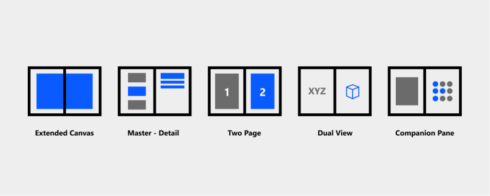
Xamarin goes dual screen
Microsoft announced the public preview of the SDK for Surface Duo, which provides recommended patterns for building apps along with many customizable features.
All the features that support dual-screen experiences for the Surface Duo are cross-platform and require no changes to Xamarin.Forms itself.
For the initial launch, Microsoft created a custom layout dubbed the TwoPaneView that manages both screens, positions content, avoids the hinge area, and reacts to rotation.
More information is available here.
GNU C library version 2.31 now available
The GNU C library version 2.31 is now available and it supports a feature test macro ‘_ISOC2X_SOURCE’ to enable features from the draft ISO C2X standard.
It also contains ‘<math.h>’ functions that round results to a narrower type and now have corresponding type-generic macros in ‘<tgmath.h>’.
Additional details on these new features and more are available here.
Xbox bug bounty program
Microsoft announced an Xbox bug bounty program in which gamers, security researchers, and technologists help to identify security vulnerabilities in the Xbox network and services and share them with the microsoft Xbox team.
“The bounty program supplements our existing investments in security development and testing to uncover and remediate vulnerabilities which have a direct and demonstrable impact on the security of Xbox customers,” Microsoft wrote in a post.
Eligible submissions with a clear and concise proof of concept (POC) are eligible for awards up to $20,000.
Godot 3.2 released
Godot 3.2 brings major features such as hundreds of bug fixes and enhancements to improve the feature-set for developers with a strong focus on usability.
Other new features include Android and WebAssembly support, AR/VR Oculus Quest and ARKit support, as well as new visual shaders, graphics/rendering improvements and more that are listed here.
The developers behind Godot said that the next major milestone they’re looking toward is Godot 4.0, which will bring a new Vulkan-based rendering backend instead of the current OpenGL ES 3.0/ OpenGL 3.3 backend.






